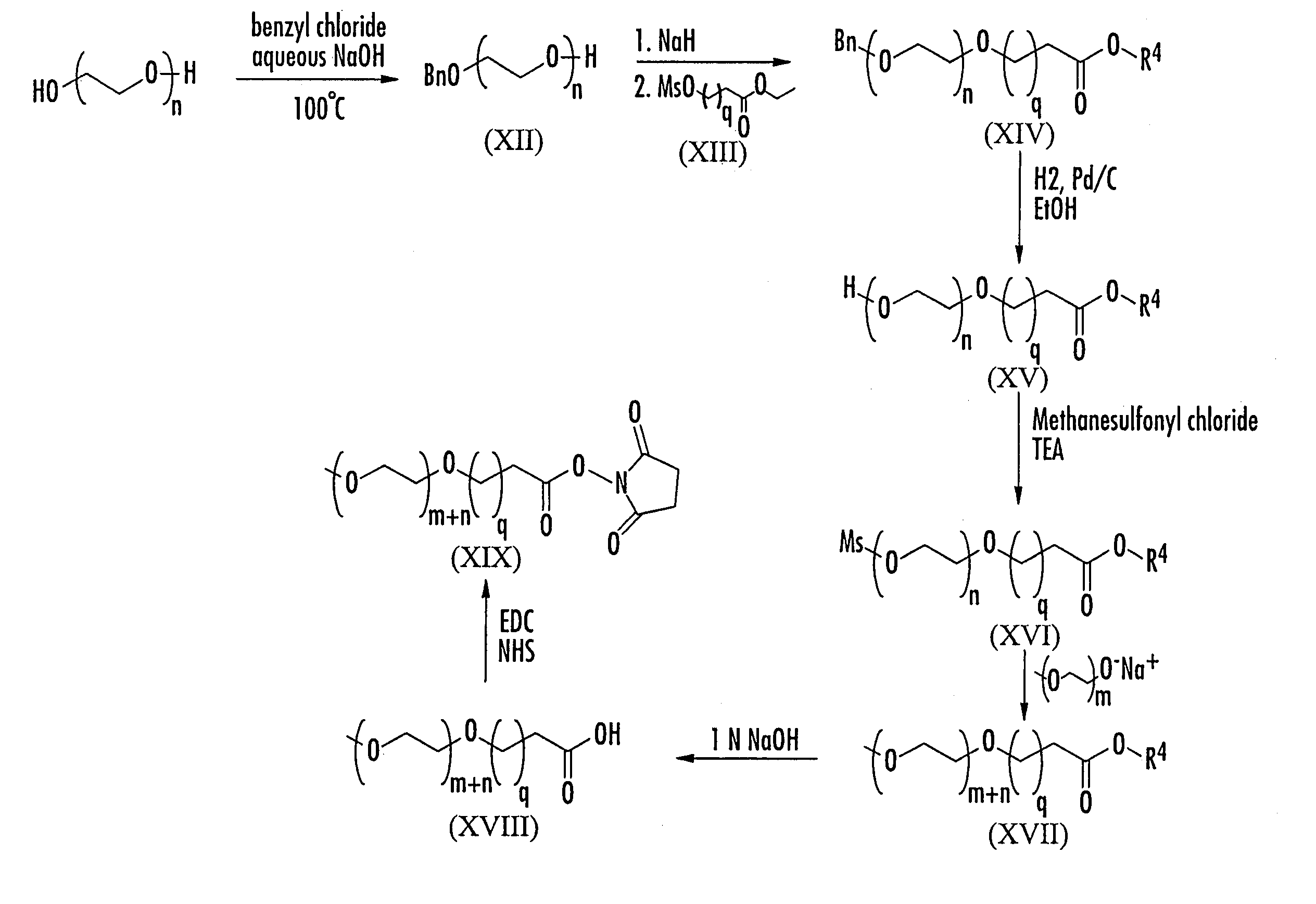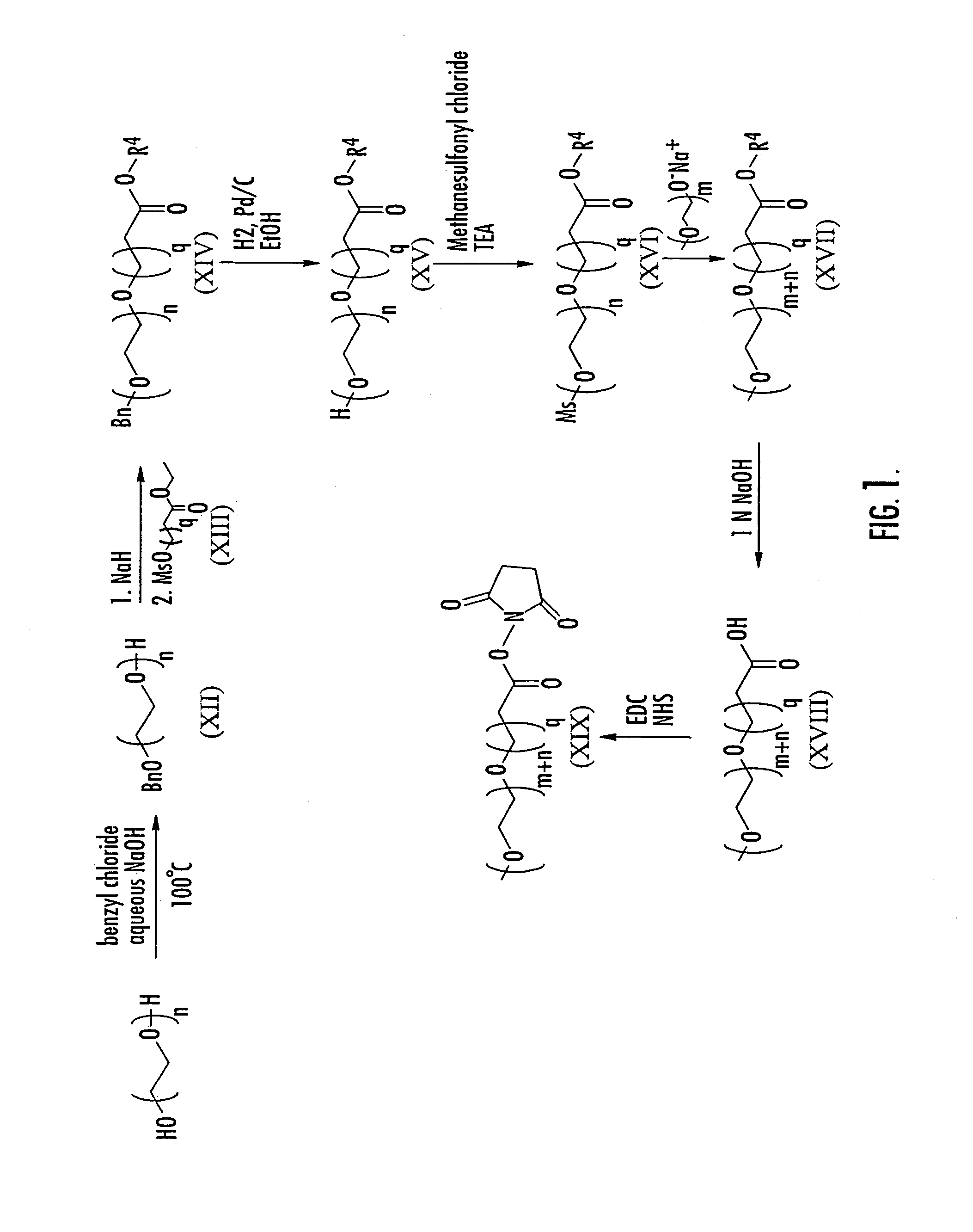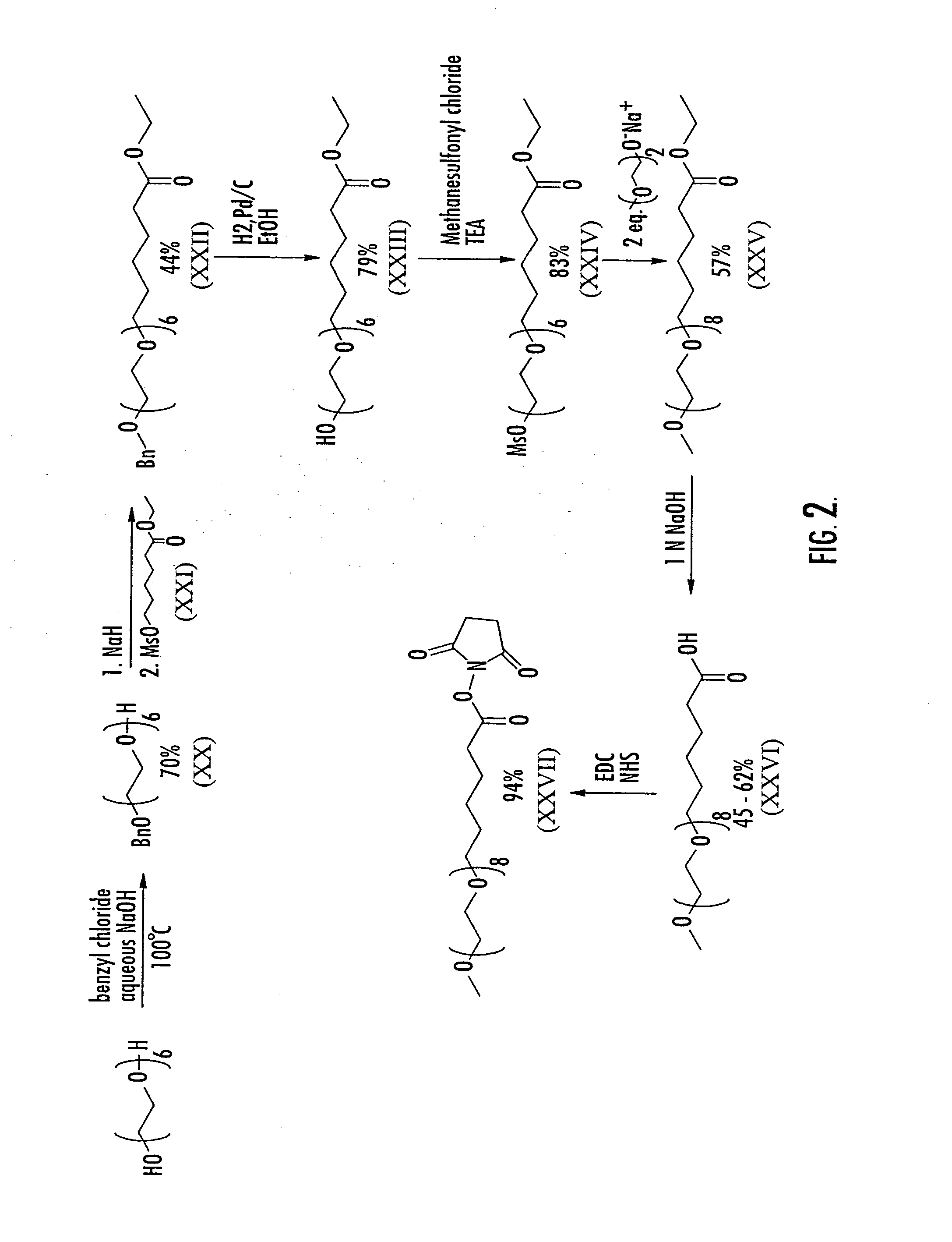Substantially monodispersed mixtures of polymers having polyethylene glycol moieties
a polyethylene glycol and polymer technology, applied in the field of polymer compound synthesizing methods, can solve the problems of inconvenient synthesis route, difficulty in physicochemical characterization and pharmacokinetic analysis, and heterogeneity of commercially available pegs and mpegs, so as to reduce the number of steps and reduce the overall synthesis time
- Summary
- Abstract
- Description
- Claims
- Application Information
AI Technical Summary
Benefits of technology
Problems solved by technology
Method used
Image
Examples
example 1
Hexaethylene glycol monobenzyl ether (XX)
[0079]An aqueous sodium hydroxide solution prepared by dissolving 3.99 g (100 mmol) NaOH in 4 ml water was added slowly to non-polydispersed hexaethylene glycol (28.175 g, 25 ml, 100 mmol). Benzyl chloride (3.9 g, 30.8 mmol, 3.54 ml) was added and the reaction mixture was heated with stirring to 100° C. for 18 hours. The reaction mixture was then cooled, diluted with brine (250 ml) and extracted with methylene chloride (200 ml×2). The combined organic layers were washed with brine once, dried over Na2SO4, filtered and concentrated in vacuo to a dark brown oil. The crude product mixture was purified via flash chromatography (silica gel, gradient elution: ethyl acetate to 9 / 1 ethyl acetate / methanol) to yield 8.099 g (70%) of non-polydispersed XX as a yellow oil.
example 2
Ethyl 6-methylsulfonyloxyhexanoate (XXI)
[0080]A solution of non-polydispersed ethyl 6-hydroxyhexanoate (50.76 ml, 50.41 g, 227 mmol) in dry dichloromethane (75 ml) was chilled in a ice bath and placed under a nitrogen atmosphere. Triethylamine (34.43 ml, 24.99 g, 247 mmol) was added. A solution of methanesulfonyl chloride (19.15 ml, 28.3 g, 247 mmol) in dry dichloromethane (75 ml) was added dropwise from an addition funnel. The mixture was stirred for three and one half hours, slowly being allowed to come to room temperature as the ice bath melted. The mixture was filtered through silica gel, and the filtrate was washed successively with water, saturated NaHCO3, water and brine. The organics were dried over Na2SO4, filtered and concentrated in vacuo to a pale yellow oil. Final purification of the crude product was achieved by flash chromatography (silica gel, 1 / 1 hexanes / ethyl acetate) to give the non-polydispersed product (46.13 g, 85 %) as a clear, colorless oil. FAB MS: m / e 239 (...
example 3
6-{2-[2-(2-{2-[2-(2-hydroxyethoxy)ethoxy]ethoxy}-ethoxy)-ethoxy]-ethoxy}-hexanoic acid ethyl ester (XXIII)
[0082]Non-polydispersed benzyl ether XI (1.03 g, 2.0 mmol) was dissolved in 25 ml ethanol. To this solution was added 270 mg 10% Pd / C, and the mixture was placed under a hydrogen atmosphere and stirred for four hours, at which time TLC showed the complete disappearance of the starting material. The reaction mixture was filtered through Celite 545 to remove the catalyst, and the filtrate was concentrated in vacuo to yield the non-polydispersed title compound as a clear oil (0.67 g, 79%). FAB MS: m / e 425 (M+H), 447 (M+Na).
PUM
| Property | Measurement | Unit |
|---|---|---|
| temperature | aaaaa | aaaaa |
| temperature | aaaaa | aaaaa |
| temperature | aaaaa | aaaaa |
Abstract
Description
Claims
Application Information
 Login to View More
Login to View More - R&D
- Intellectual Property
- Life Sciences
- Materials
- Tech Scout
- Unparalleled Data Quality
- Higher Quality Content
- 60% Fewer Hallucinations
Browse by: Latest US Patents, China's latest patents, Technical Efficacy Thesaurus, Application Domain, Technology Topic, Popular Technical Reports.
© 2025 PatSnap. All rights reserved.Legal|Privacy policy|Modern Slavery Act Transparency Statement|Sitemap|About US| Contact US: help@patsnap.com



